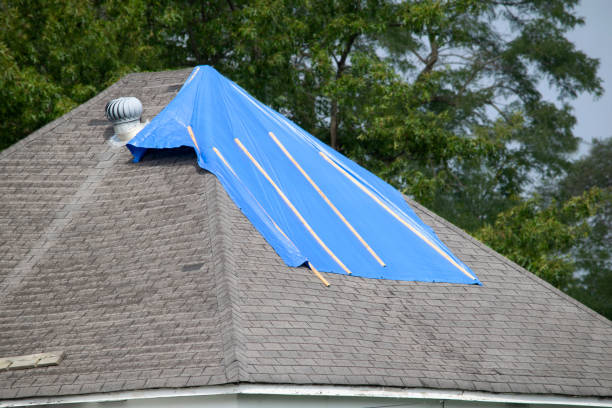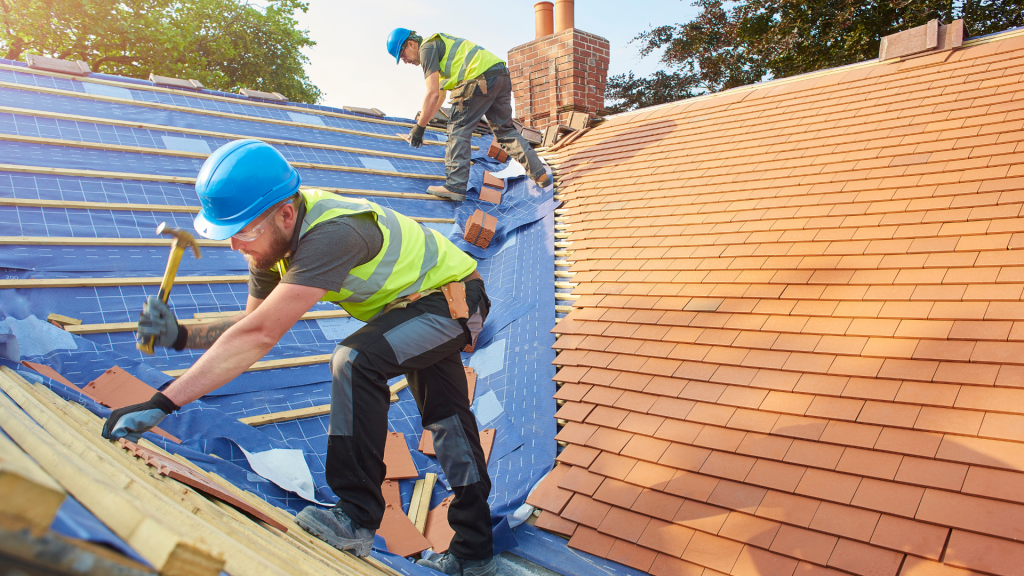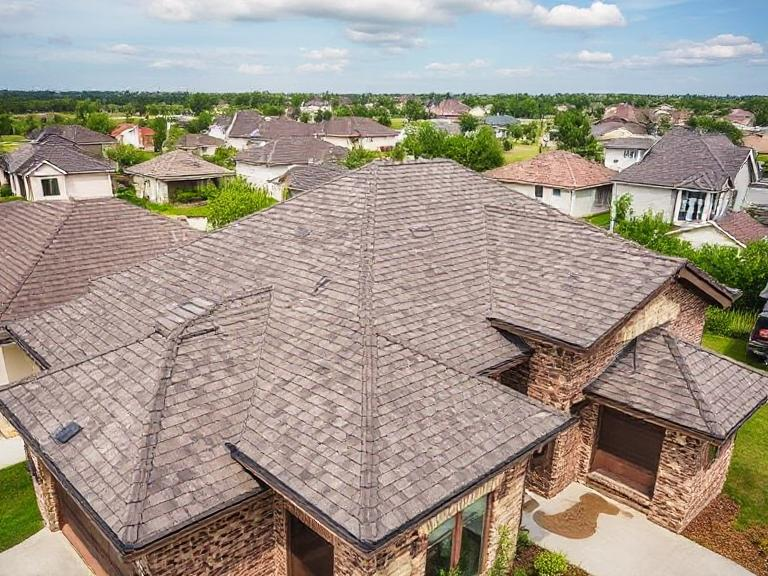
Why Heavy Rain Might Be Causing Leaks in Your Roof and Solutions
Introduction
Heavy rain can be a double-edged sword. On one hand, it nurtures our gardens, fills our reservoirs, and cools the air. On the other hand, it can wreak havoc on our homes, especially when it comes to roofing. If you've ever wondered why heavy rain might be causing leaks in your roof and solutions to address these issues, you're not alone. Many homeowners face this dilemma, often leading to costly repairs and endless frustration.
Roofs serve as the first line of defense against nature's elements. However, they are vulnerable to storm damage and wear over time. In this comprehensive guide, we will dive deep into the reasons behind roof leaks during heavy rainfall and explore effective solutions that can keep your home safe and dry.
Why Heavy Rain Might Be Causing Leaks in Your Roof?
When you experience heavy rain, the sheer volume of water can overwhelm your roofing system. But what exactly happens that leads to leaks? The answer lies in several factors:
Material Deterioration: Over time, roofing materials like shingles or tiles undergo wear and tear due to exposure to sun and harsh weather conditions.

Clogs in Gutters: Blocked gutters prevent proper drainage of water away from your roof.
Poor Installation: A roof poorly installed by an inexperienced roofing contractor may develop vulnerabilities over time.

Flashing Issues: The metal strips used around chimneys or vent pipes can corrode or become loose.
Roof Design Flaws: Certain roof designs may not shed water effectively, leading to pooling which increases leak potential.
Previous Storm Damage: Any existing damage from past storms may exacerbate issues during heavy rainfall.
Understanding these factors is crucial for both prevention and repair of leaks caused by heavy rainfalls.

The Importance of Regular Roof Inspections
What is a Roof Inspection?
A roof inspection is a thorough examination conducted by a qualified roofing contractor to identify any potential issues with your roof’s integrity.
Why Schedule Regular Inspections?
Regular inspections help catch problems before they escalate into major repairs or replacements:
- Identify minor damages early
- Ensure proper maintenance protocols are followed
- Maintain warranties on roofing materials
- Enhance the longevity of your roof
How Often Should You Inspect Your Roof?
Most experts recommend at least two inspections per year—once in the spring and once in the fall—and following severe weather events.
Indicators of Storm Damage on Your Roof
Visible Signs of Damage
roofing contractorAfter a heavy rainstorm, look for these indicators that might signal storm damage:
Conducting a DIY Inspection Safely
If you feel comfortable doing so, you can perform a basic inspection yourself:
- Use binoculars for a closer look at high areas.
- Stay clear of edges; if you're unsure about safety, call a professional.
Emergency Tarping Solutions for Immediate Protection
What is Emergency Tarping?
Emergency tarping involves placing a tarp over damaged sections of your roof to protect against further water intrusion until repairs can be made.
When Should You Consider Emergency Tarping?
Consider emergency tarping if:
- Your home has sustained visible storm damage.
- Water is leaking into living spaces.
- You need immediate protection until full repairs can be arranged.
Finding Emergency Tarping Services Near You
Searching for "roof tarping near me" online can yield local contractors who offer 24-hour emergency services for urgent situations.
The Role of Professional Roofing Contractors
Why Hire a Roofing Contractor?
While some homeowners may attempt DIY repairs, hiring an experienced roofing company ensures that the job is done correctly:
Qualities to Look For in a Roofing Contractor
When selecting a roofing contractor:
- Check their licensing and insurance.
- Read reviews from previous clients.
- Ask about warranties offered on labor and materials.
Understanding Roof Replacement Options After Severe Damage
When Is It Time for Roof Replacement?
If your roof has experienced extensive storm damage or shows signs of significant deterioration, replacement may be necessary:
Types of Roofing Materials Available for Replacement
When considering replacement options:
| Material Type | Lifespan | Cost Range | Pros | Cons | |------------------|--------------|---------------------|---------------------------|----------------------------| | Asphalt Shingles | 15–30 years | $90–$100 per square | Affordable & versatile | Less durable than others | | Metal Roofing | 40–70 years | $150+ per square | Long-lasting & energy-efficient | Higher upfront cost | | Slate | 75+ years | $600+ per square | Extremely durable | Very expensive |
Addressing Flashing Issues as Part of Repairs
What Is Flashing?
Flashing refers to thin pieces of metal installed around various features on your roof like chimneys or vents designed to direct water away from critical areas.
Common Problems with Flashing
Flashing issues often arise when:
Preventive Measures Against Future Rain Damage
1) Regular Maintenance Checks
Ensure you maintain your gutters free from debris regularly after storms or seasonal changes to allow proper drainage away from your roofline.
2) Upgrading Materials
Consider upgrading worn-out materials with newer technology designed specifically for higher resistance against water intrusion during extreme weather events.
FAQs
Q1: How do I know if my roof needs repair after heavy rain? A1: Look for ceiling stains inside your home; check outside for missing shingles or sagging areas—these are common signs indicating needed repairs!
Q2: Can I tarp my own roof temporarily until help arrives? A2: Yes! If it’s safe enough—for instance using long poles—it’s acceptable but make sure it’s secure until professionals manage permanent fixes!
Q3: How much does emergency tarping typically cost? A3: Costs vary widely depending upon size/complexity but expect anywhere between $200-$500 based on local rates & urgency involved!
Q4: What causes leaks specifically during intense storms compared with regular rain showers? A4: Intense storms create overwhelming amounts of water pressure that older roofs simply aren’t equipped well enough handle without prior preparations being made beforehand!
Q5: Are there eco-friendly options available when replacing roofs damaged by storms? A5: Absolutely! Many companies now offer sustainable choices such as recycled rubber tiles which provide durability while promoting environmental conservation efforts too!
Q6: How quickly should I act if I suspect my home has sustained storm damage? A6: Immediate action within hours/days post-storm is always best practice—delaying could worsen existing problems leading potentially larger expenses later down road!
Conclusion
Heavy rain poses serious risks to the integrity of our roofs; understanding why heavy rain might be causing leaks in your roof and solutions available can save homeowners both money and stress down the line! Whether you choose regular inspections by reputable contractors or opt for emergency services when needed—investments made now will pay dividends later ensuring safety within homes today against Mother Nature's unpredictable whims tomorrow! Don't hesitate—reach out today if you're dealing with any concerns regarding potential leakage caused by recent storms!
In summary, safeguarding our homes starts with knowledge about how weather affects structures along with proactive measures taken against unforeseen challenges such as those presented through unexpected downpours throughout seasons ahead!